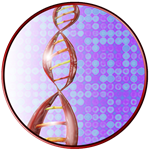 |
Omics
|
CONTEXT
Similarly to all other non-validated tests, users are completely free to develop their own protocol and thus to get test perfectly adapted to their specific needs. This includes thus a multitude of possibility regarding protocol steps (pre-incubation, application, rinsing…) and used endpoints (biochemistry, molecular biology, OMICS, cell imaging...). Moreover the main advantage is the possibility to use well-known references as positive and negative control that may be different from regulatory toxicological ones.
DESCRIPTION
In parallel to the advent of in vitro reconstructed tissues a concomitant spectacular development of OMICS technologies took place. All studies that compared 2D cell cultures with our 3D reconstructed tissues pointed out that these latter were much closer to human in vivo tissues than 2D cultures. Our 3D reconstructed tissues are not only good models of human corresponding tissues but they are compatible with all OMICS technologies: genomics, proteomics, metabolomics… Moreover, reconstructed tissues allow the comparison of treated conditions to native ones which is hardly feasible in vivo. In vitro studies also allow to better control scientific parameters that may have an incidence on results.
Example of applications:
- Single or multi-donor comparisons
- Impact of treatment...
MODELS
DETAILED ASSAY PROCEDURE
REFERENCES
Adhesion of Staphylococcus aureus and Staphylococcus epidermidis to the EpiskinTM reconstructed epidermis model and to an inert 304 stainless steel substrate. G. Lerebour, S. Cupferman, M.N. Bellon-Fontaine. Journal of Applied Microbioloby, 97: 7-16, 2004
Secreted aspartic proteinase (Sap) activity contributes to tissue damage in a model of human oral candidosis. M. Schaller, H. C. Korting, W. Schäfer, J. Bastert, W. Chen, B. Hube. Molecular microbiology, 34: 169-180, 1999.
Effects of the Human Immunodeficiency Virus (HIV) proteinase inhibitors saquinavir and indinavir on in vitro activities of secreted aspartyl proteinases of Candida albicans isolates from HIV-infected patients. H. C. Korting, M. Schaller, G. Eder, G. Hamm, U. Böhmer, B. Hube. Antimicrobial Agents and Chemotherapy, 43: 2038-2042, 1999.
Toxicity and antimicrobial activity of a hydrocolloid dressing containing silver particles in an ex vivo model of cutaneous infection. M Schaller, J. Laude, H. Bodewaldt, G. Hamm, H. C. Korting. Skin Pharmacology and Physiology, 17: 31-36, 2004.
Polymorphonuclear leukocytes (PMNs) induce protective Th1-type cytokine epithelial responses in an in vitro model of oral candidiasis. M. Schaller, U. Boeld, S. Oberbauer, G. Hamm, B. Hube, H. C. Korting. Microbiology, 150: 2807-2813, 2004
An ultrastructural and a cytochemical study of candida invasion of reconstituted human oral epithelium. J. A. M. S. Jayatilake, Y. H. Samaranayake, L. P. Samaranayake. Journal of Oral pathology & Medicine, 34: 240-246, 2005.
RT-PCR detection of Candida albicans ALS gene expression in the reconstituted human epithelium (RHE) model of oral candidiasis and in model biofilms. C. B. Green, G. Cheng, J. Chandra, P. Mukherjee. M. A. Ghannoum, L. Hoyer. Microbiology, 150: 267-275, 2004.
Hyphal invasion of Candida albicans inhibits the expression of human β-defensins in experimental oral candidiasis. Q. Lu, J. A. M. S. Jayatilake, L. P Samaranayake, L. Jin. Journal of investigative Dermatology, 126: 2049-2056, 2006.